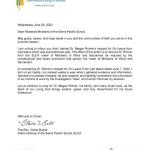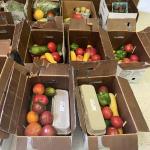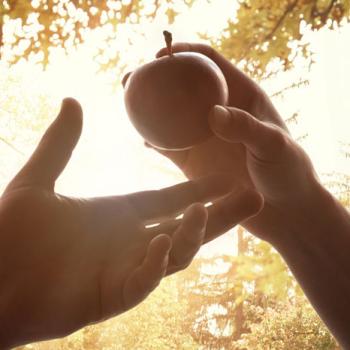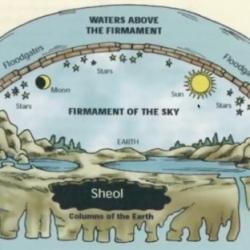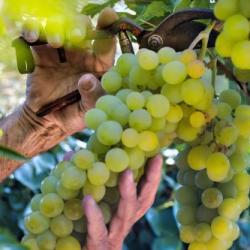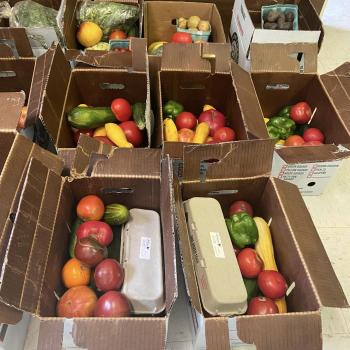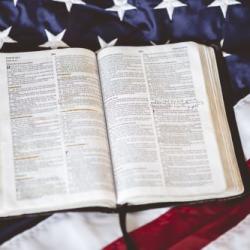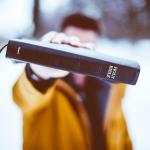God invites us into a divine cycle of reciprocity so that Creation, communities, and the church can flourish.
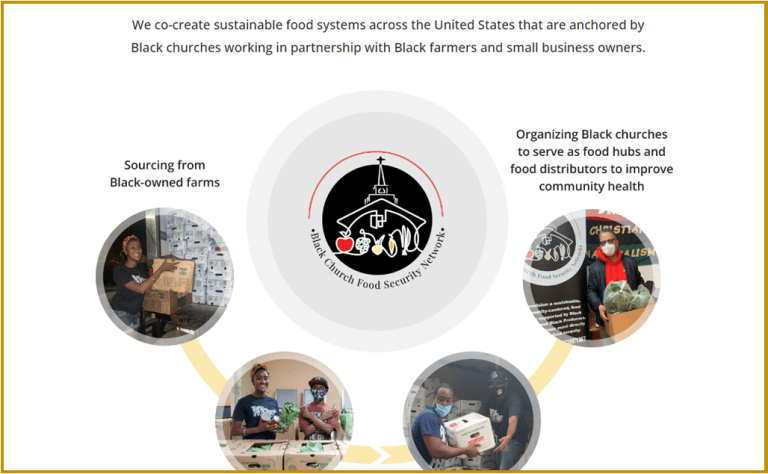
Here are ideas for reading and preaching Isaiah 55:10-13, God’s promise of divine reciprocity, and Matthew 13:1-9, 18-23, the parable of the sower. This is part of the EcoPreacher 1-2-3 series to equip preachers and congregations for engaging the Bible through an ecological lens. These texts are assigned as part of the Revised Common Lectionary for the Seventh Sunday after Pentecost, Year A.
Eco-Exegesis
Eco-exegesis is a method of interpreting the biblical text through a green lens using the principles of ecological theology.
Isaiah 55:10-11
10For as the rain and the snow come down from heaven, and do not return there until they have watered the earth, making it bring forth and sprout, giving seed to the sower and bread to the eater, 11so shall my word be that goes out from my mouth; it shall not return to me empty, but it shall accomplish that which I purpose, and succeed in the thing for which I sent it.
In her poetic and exquisitely researched book, Braiding Sweetgrass (Milkweed Editions, 2013), Indigenous botanist Robin Wall Kimmerer explains that reciprocity is what allows the circle of life to distribute what is needed to every living thing in an ecosystem. The Indigenous precept of the Honorable Harvest means that humans, following the example of their other-than-human kin, are to “take only what is given, to use it well, to be grateful for the gift, and to reciprocate the gift” (“The Council of Pecans,” loc. 366).
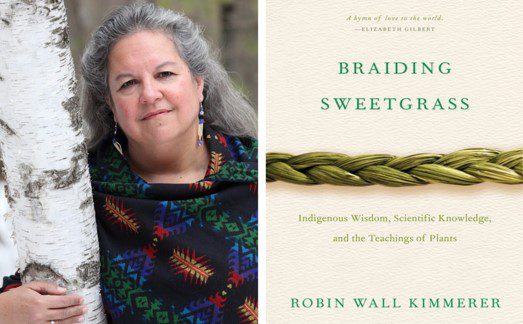
Isaiah 55:10-13 is a beautiful example of this kind of reciprocity as understood by the ancient Israelites.
In just these four verses, we see the water cycle, the food cycle, and the cycle of divine purpose all intertwined in mutual interdependence. Isaiah paints a stunning picture of the mountains and hills singing because of humanity’s commitment to joy and peace. The trees applaud when the Israelites are restored to their role as stewards of the Earth. When that happens, the cutting thorns and briers that have overtaken the land due to neglect will be replaced by majestic trees of cypress and myrtle.
The preacher may want to extend the reading to 56:1 which includes God’s explanation of how this restoration will come about. “Maintain justice, and do what is right, for soon my salvation will come, and my deliverance be revealed.” In other words, divine deliverance will come as God has promised. And we will participate in that restoration most fully when we treat both our Earth kin and human kin according to the ethic of care and reciprocity with which God has entrusted us.
Matthew 13:8
Other seeds fell on good soil and brought forth grain, some a hundredfold, some sixty, some thirty.
Jesus’s parable of the sower is another example of what reciprocity looks like between humans and God’s Creation. When handled with care, intentionality, and good common sense, seeds planted in healthy soil know just what to do. They don’t need coaxing or instruction. But seeds that are forced to grow in less-than-ideal conditions can’t be expected to produce.
So, when the sower learns the lesson of the seeds and good soil, she will not only find an abundance of food, but also an abundance of spiritual rewards. This parable is an illustration of what it means to live in reciprocity with the Earth community and human community.
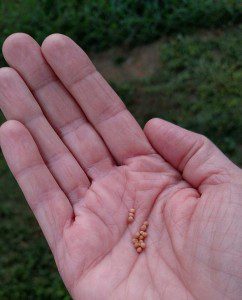
This is a lesson that churches can learn as many are struggling with dwindling attendance, empty buildings, and a loss of purpose.
As Wilson Dickinson explains, “Many churches are finding ways to repurpose their buildings to partner with their surrounding community to bring about healing and health to individual and social bodies by providing office space for nonprofits, meeting spaces for communities, hubs for artists, and facilities and volunteers for after-school programs,” (The Green Good News: Christ’s Path to Sustainable and Joyful Life, T. Wilson Dickinson, Eugene, OR: Cascade Books, 2019, 83).
Black Church Food Security Network
An instructive and inspiring example of linking Earth with faith is the Black Church Food Security Network (BCFSN). Based out of Baltimore, Md., this group works to empower black communities and economies by viewing the land holdings of black churches as an already existing land trust. They connect growers and churches up and down the Eastern seaboard. Launched in 2016, the network grew out of a community garden project at Pleasant Hope Baptist Church in Baltimore.
According to the BCFSN website, “Rev. Heber Brown, III began dreaming of what could happen if more Black churches started growing food on their land and worked in coordination with other congregations and farmers to co-create local Black-owned food systems.” The network offers training, tours of black-owned farms, and Soil to Sanctuary farmers markets.
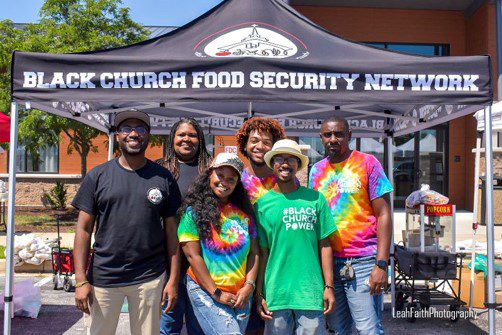
BCFSN shows us that the church can be one of the central places where we turn away from destructive, dehumanizing industrial agriculture and toward networks of reciprocity through structures of food justice. The farmers reap abundant harvests because of their holistic stewarding of the land and crops. Urban communities enjoy delicious, healthy food while sustaining the financial wellbeing of the farmers.
This is reciprocity in action. And it makes a difference for the lives of the people, the health of the land, and the strength of the church.
1 Eco-Idea
The Eco-Idea is one succinct statement that tells us who God is and/or what God does in relation to Creation and how we should respond as people of faith.
God invites us into a divine cycle of reciprocity so that Creation, communities, and the church can flourish.
2 Eco-Questions
Eco-Questions are what we can ask to help a congregation draw out the implications of the Eco-Exegesis and Eco-Idea.
- In what ways does your church already participate in the divine cycle of reciprocity? What are examples of mutual interdependence you see happening between your congregation, the local community, and God’s Creation that you can affirm and celebrate?
- How can your church become “good soil” that fosters reciprocity and community? Is there space in your building that you could offer a nonprofit group or organization? Are there times when the church is not being used that could be opened to afterschool programs or artist’s groups?
3 Eco-Actions
Eco-Actions are ways that a congregation might respond to the Eco-Idea and Eco-Questions. One of these possibilities may have salience for your ministry context.
- Explore what networks of reciprocity already exist in your community and see where your church might fit into that “ecosystem.” Is there a community garden network your church could join or host? Could you welcome a farmer’s market on your church property so that the community can access local, fresh produce? Check out this link to find a community garden near you: https://www.communitygarden.org/.
- Invite a botanist, master gardener, or arborist to present a program about the trees, flowers, and other plants on your church’s property. Contract with that person to train people in the congregation to be good stewards of the soil, plants, and animals in your congregation’s little piece of Creation.
- Take up a special offering this Sunday to support the Black Church Food Security Network, which you can donate here. And if you are within the geographic area of the BCFSN, see how you can get involved with or learn from their model. For more information, click here.
Read also:
Food & Faith: Preaching Deuteronomy 4 Through a Green Lens
Choose Life for Earth, Choose Earth for Life: Deuteronomy 30:15-20
Prophets Fighting for Environmental Justice: Preaching Ideas for Jer. 20, Matt. 10
Race, Faith, and the Climate Movement: Interview with Rev. Lennox Yearwood, Jr.
EcoPreacher 1-2-3 is a partnership between the Rev. Dr. Leah Schade and the Interfaith Center for Sustainable Development, publishers of Eco Bible, a Jewish ecological commentary on the Hebrew Scriptures. EcoPreacher 1-2-3 provides Creation-centered sermon preparation that is short, accessible, and based on a solid biblical foundation. To see other EcoPreacher ideas and to sign up to receive future EcoPreacher 1-2-3 installments, click here.
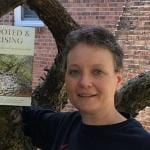
The Rev. Dr. Leah D. Schade is the Associate Professor of Preaching and Worship at Lexington Theological Seminary in Kentucky and ordained in the ELCA. Dr. Schade does not speak for LTS or the ELCA; her opinions are her own. She is the author of Preaching in the Purple Zone: Ministry in the Red-Blue Divide (Rowman & Littlefield, 2019) and Creation-Crisis Preaching: Ecology, Theology, and the Pulpit (Chalice Press, 2015). She is the co-editor of Rooted and Rising: Voices of Courage in a Time of Climate Crisis (Rowman & Littlefield, 2019). Her newest book is Introduction to Preaching: Scripture, Theology, and Sermon Preparation, co-authored with Jerry L. Sumney and Emily Askew (Rowman & Littlefield, 2023).


